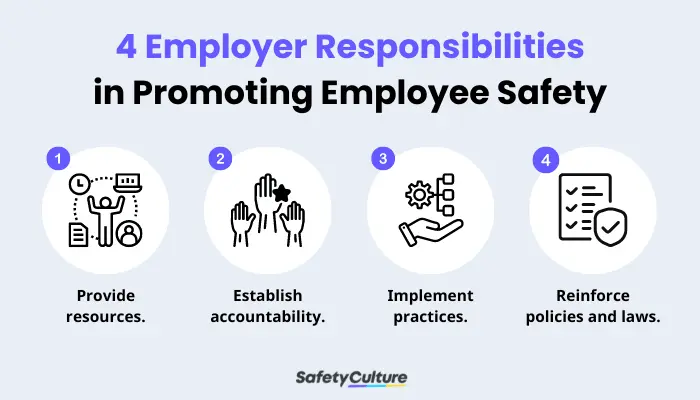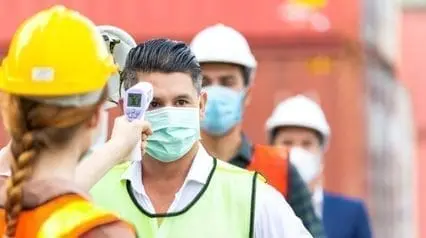What is Employee Safety?
Employee safety pertains to the ability of an employee to feel safe, healthy, and empowered to report safety concerns in the workplace. Complementary to office or workplace safety, it aims to foster a sustainable practice of ensuring a safe working environment by providing safe equipment and implementing safety guidelines that enable employees to be productive and efficient in their job.
Importance of Employee Safety
Office safety plays a vital role in an employer’s responsibility to its employees. Apart from that, it presents a huge deal of advantages both for the short and long-term success of the business. Some of the most common areas where employee safety impacts the organization are the following:
- Productivity – When employee safety is strictly implemented, there’s a high chance of fewer employees going on leave to heal from illnesses or injuries caused by an unsafe work environment.
- Employee Retention – Since employees can work with peace of mind knowing they’re safe in the workplace, trust and confidence are built, which are key factors that affect an employee’s decision to stay in or leave the organization.
- Business Expense – Employers can also reduce risks and costs on insurance claims, accident- or emergency-related expenses, and lawsuits if the safety of workers is of utmost priority.
- Reputation – Workplace safety is a key driver of a company’s reputation as it helps the organization remain compliant with regulations and therefore stay competitive among other key players in the industry.
Components

4 Employer Responsibilities in Promoting Employee Safety
For employee safety to be holistic, its components must be well integrated into an organization’s initiatives. As a brief guide, take a closer look at each component of employee safety:
- Training – Both for employers and workers, training is crucial to building and sustaining organizational efforts toward employee safety. As work practices continue to evolve, being updated on laws and regulations and working on improving safety guidelines are a must.
- Implementation – Employee safety may look different from one organization to another, but general practices and principles may apply to all industries. The minimum standards for these, along with country- or state-specific guidelines, must be established as part of an organization’s best practices for a culture of safety.
- Monitoring – Regular inspections and audits should be scheduled and conducted to check if employee safety measures are being followed and if there are areas being overlooked. Also, relevant data should be analyzed for strict monitoring and continuous improvement.
Employer Responsibilities in Promoting Safety
The following are some of the top employee safety responsibilities that organizations must heed and take into consideration:
Provide resources.
Depending on the industry, nature of work, and day-to-day business needs, employers need to ensure that safety risks are managed and provide employees with necessary safety equipment, ample Personal Protective Equipment (PPE), and adequate safety supervision.
Aside from those, another effective way for an employer to provide support and resources is by creating and implementing an employee safety training program. This can be included in the employee handbook and be part of the organization’s requirements.
Establish accountability.
Organizations must have a dedicated Occupational Health and Safety (OHS) team tasked to handle anything that concerns employee safety and health. Representatives, officers, and managers who are part of the OHS team must be well-trained, certified, and authorized by the organization and relevant governing bodies to ensure that the workers are in the right hands.
Apart from the employers having a legal responsibility to ensure employee safety, workers also play an essential role in fostering a working environment that’s safe for everyone. They are required to comply with the policies, laws, and standards set out by the company, state, and country they’re in. Further, they must wear the provided PPE, use the safety equipment and materials in carrying out their work, and practice office safety rules at all times.
Implement practices.
Implementing safety practices, building a culture of empowerment through proactive safety reporting, and advocating for employee safety are all best done by having clear guidelines in place. These must come from employers, with buy-in from the management as well as active participation from the employees.
Further, employers must establish the mindset and practice that employee safety is a continuous improvement movement. In line with this, regular audits and inspections revolving around employee safety programs should also be scheduled and conducted.
Reinforce policies and laws.
It’s the employer’s duty to put strict measures in place so that employees are reminded of why it’s important for them to abide by the laws and regulations concerning their safety. Theoretical knowledge on such isn’t enough, as practical application always takes priority when cultivating a sustainable safety culture.
Employers must establish an employee safety program that fits their business needs and is aligned with the applicable legal jurisdictions. Here are some examples of international and country-specific laws and acts on employee safety in the workplace:
- International Labour Organization (ILO)
- Occupational Safety and Health Administration (OSHA) in the USA
- Health and Safety Executive (HSE) in the UK
- Safe Work Australia
Understand more about these regulatory bodies governing employee and workplace safety.




